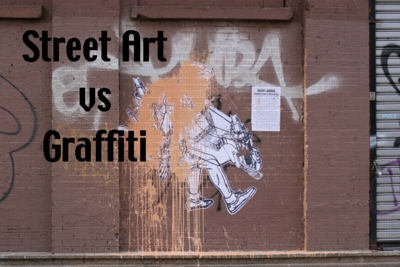
“Hell Zone”, TAD and TCT, 2006 (?), spray-paint on concrete, on loan from the East Village.
I shot this work in the east Village on 3rd Street between 2nd Avenue and the Bowery. The wall faced perpendicular to the street, being a building that was on one side of a community garden. To get the photo I had to stick the camera lense through the wire fence, and shoot without being sure I was aiming at the right place.
Hell Zone gives us some great classic-styling overlapping bubble text. The letters are big, confident and juicy. The “N” looks great; the rendering of the “O” as a smiley character with a mischevous grin is cute. It escapes being cliché just through its obvious refernece to what is a classic old graffitti motif.
What looks at first to be a piece is actually just a throw up over someone else’s art. For instance, the colors that initially seem to be the fill-ins for “Hell Zone” go beyond the edges of their letters. If you look carefully you will see some retarded skull on the right, and a toy looking throw up on the left. Before laying down their own piece, TAD and TCT have first gone over this stuff with some white paint. This has reduced the definition of that first tag, toning it down so that it can serve as a generic coloring base for TAD and TCT to lay down their piece. I generally think that shit graffiti needs to be written over, and a look behind the dominating ‘Hell Zone’ shows amateurish material. This a great and justified appropriation of some colors where there would otherwise just be a plain outline.










